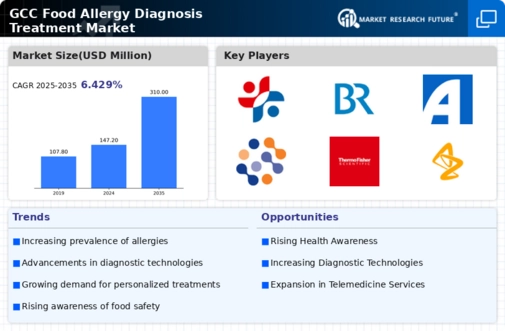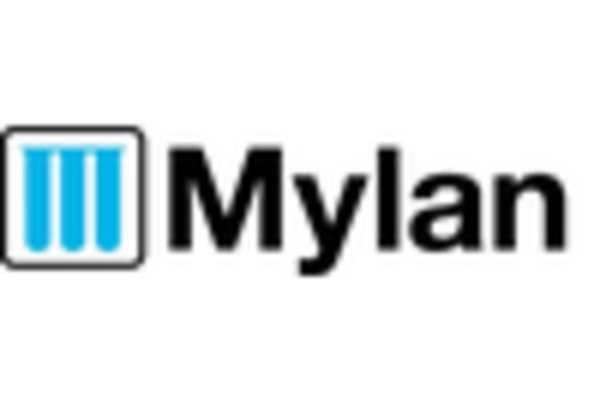Rising Incidence of Anaphylaxis Cases
The alarming rise in anaphylaxis cases related to food allergies is a significant driver for the food allergy-diagnosis-treatment market. Anaphylaxis, a severe allergic reaction, necessitates immediate medical intervention and has heightened the urgency for accurate diagnosis and effective treatment options. In the GCC, healthcare providers are increasingly focusing on training and equipping individuals with the knowledge to recognize and respond to anaphylactic reactions. This trend is likely to boost the demand for epinephrine auto-injectors and other emergency treatment solutions. Consequently, the food allergy-diagnosis-treatment market is expected to expand, with projections indicating a potential increase in market value by 10% over the next few years.
Increasing Awareness of Food Allergies
The rising awareness of food allergies among the population in the GCC is a crucial driver for the food allergy-diagnosis-treatment market. Educational campaigns and initiatives by health organizations have led to a better understanding of food allergies, their symptoms, and potential risks. This heightened awareness encourages individuals to seek medical advice and diagnostic testing, thereby increasing the demand for allergy testing services. As a result, the market is projected to grow, with estimates suggesting a compound annual growth rate (CAGR) of around 8% over the next few years. Furthermore, the emphasis on food labeling and allergen information is likely to enhance consumer confidence, further propelling the food allergy-diagnosis-treatment market in the region.
Growing Demand for Personalized Medicine
The trend towards personalized medicine is emerging as a significant driver in the food allergy-diagnosis-treatment market. Patients are increasingly seeking tailored treatment plans that consider their unique allergy profiles and responses to various allergens. This shift is prompting healthcare providers to adopt more individualized approaches in allergy management, including customized immunotherapy and dietary recommendations. The integration of genetic testing and biomarker analysis into allergy diagnostics is also gaining traction, potentially enhancing treatment efficacy. As personalized medicine continues to evolve, the food allergy-diagnosis-treatment market may witness a growth rate of approximately 9% in the near future, reflecting the changing landscape of patient care.
Technological Innovations in Allergy Testing
Technological advancements in diagnostic tools and methodologies are significantly influencing the food allergy-diagnosis-treatment market. Innovations such as molecular diagnostics, skin prick tests, and blood tests have improved the accuracy and speed of allergy detection. The introduction of point-of-care testing devices allows for immediate results, which is particularly beneficial in clinical settings. Moreover, the market is witnessing an increase in the adoption of telemedicine, enabling remote consultations and follow-ups for allergy patients. This shift towards technology-driven solutions is expected to enhance patient outcomes and satisfaction, potentially leading to a market growth rate of approximately 7% in the coming years.
Government Initiatives for Allergy Management
Government initiatives aimed at improving food safety and allergy management are playing a pivotal role in shaping the food allergy-diagnosis-treatment market. Regulatory bodies in the GCC are implementing stricter food labeling laws and guidelines to ensure that allergenic ingredients are clearly identified. These measures not only protect consumers but also promote the need for accurate diagnosis and treatment options. Additionally, public health campaigns are being launched to educate the population about food allergies, further driving demand for diagnostic services. As a result, the market is likely to experience a growth trajectory of around 6% as these initiatives take effect.

















Leave a Comment